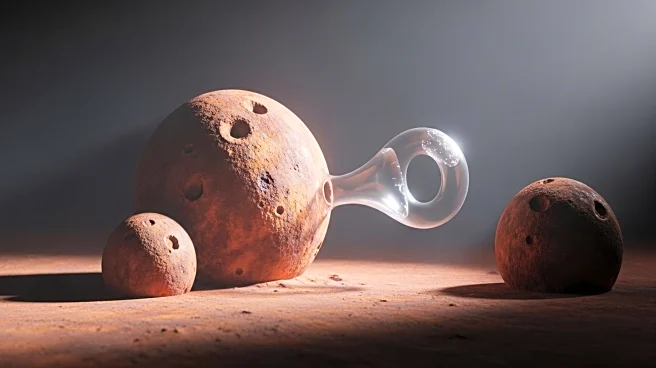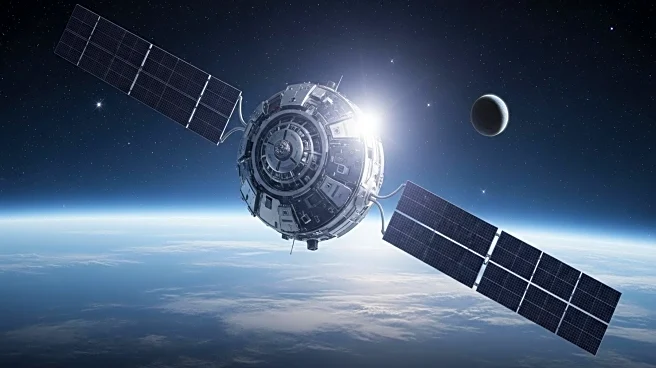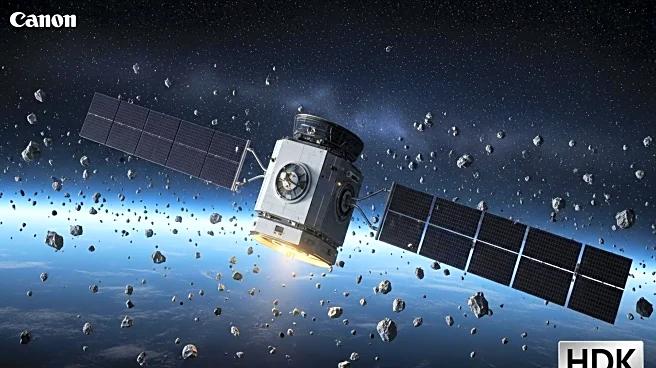What is the story about?
What's Happening?
Recent research has identified Earth as the source of rust formation on the Moon, specifically the mineral hematite. The study, led by planetary scientist Xiandi Zeng from the Macau University of Science and Technology, suggests that oxygen ions from Earth are responsible for oxidizing iron on the Moon's surface, leading to the formation of hematite. This process occurs when the Moon passes through Earth's magnetotail, a region where Earth's atmosphere leaks oxygen ions. During this period, the Moon is shielded from the solar wind, which typically prevents oxidation by bombarding the Moon with hydrogen ions. Laboratory experiments confirmed that oxygen ions can oxidize metallic iron and other iron-bearing minerals found on the Moon, while hydrogen ions from the solar wind are ineffective in reversing this oxidation.
Why It's Important?
The discovery of hematite on the Moon has significant implications for understanding the chemical interactions between Earth and its satellite. The presence of hematite, a mineral that typically requires oxygen and water to form, challenges previous assumptions about the Moon's environment. This finding suggests a complex material exchange between Earth and the Moon, potentially offering insights into the history of Earth's atmosphere and the Great Oxidation Event. The research also highlights the Moon's potential as a record of Earth's atmospheric changes over billions of years, providing a unique opportunity for scientific exploration and understanding of planetary processes.
What's Next?
Future lunar missions, such as India's Chandrayaan-3 and China's Chang'E-7, are expected to further investigate the presence of hematite and other minerals at the Moon's poles. These missions aim to deepen our understanding of the Moon's geological history and its interactions with Earth. The findings could also inform future lunar exploration and the potential for resource utilization on the Moon. Continued research into the Moon's regolith and its interactions with interstellar plasmas will be crucial in unraveling the complex history of Earth-Moon exchanges.
Beyond the Headlines
The study of hematite on the Moon opens up new avenues for understanding the long-term effects of Earth's magnetosphere on its satellite. The presence of water as a by-product of hematite reduction suggests that the Moon's surface processes are more dynamic than previously thought. This research underscores the importance of studying lunar geology to gain insights into planetary evolution and the interconnectedness of celestial bodies within our solar system.
AI Generated Content
Do you find this article useful?















